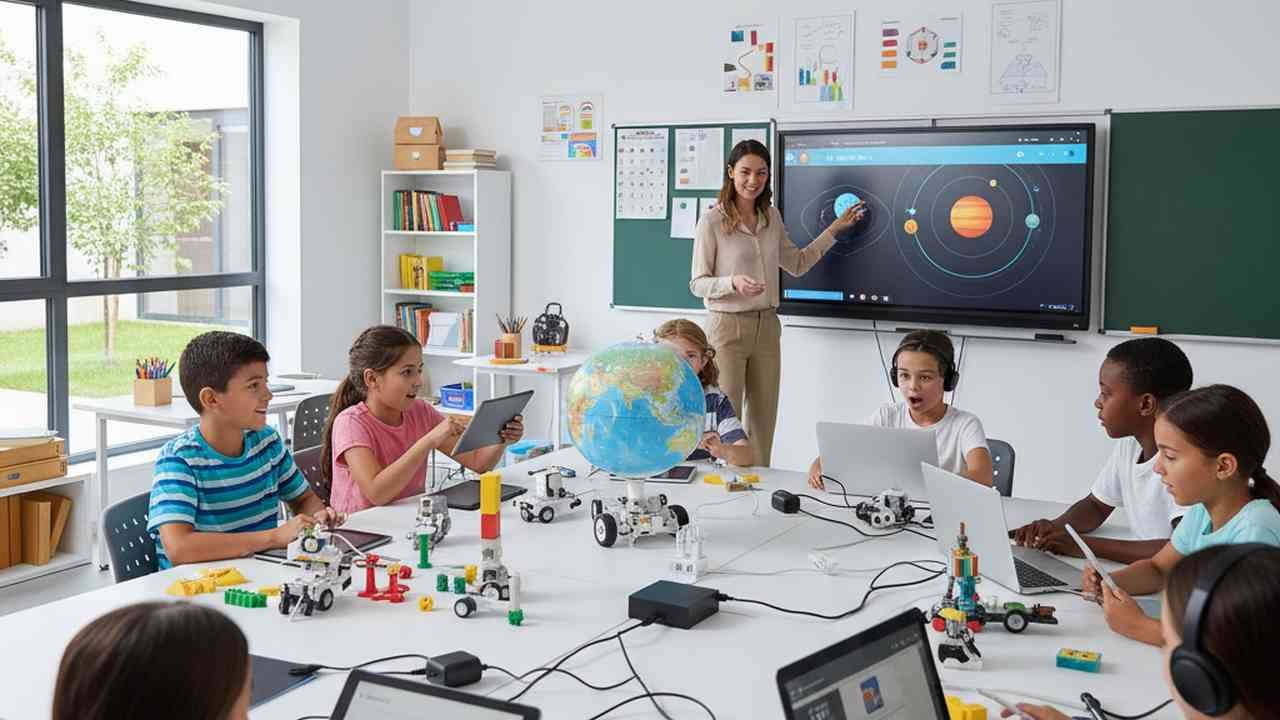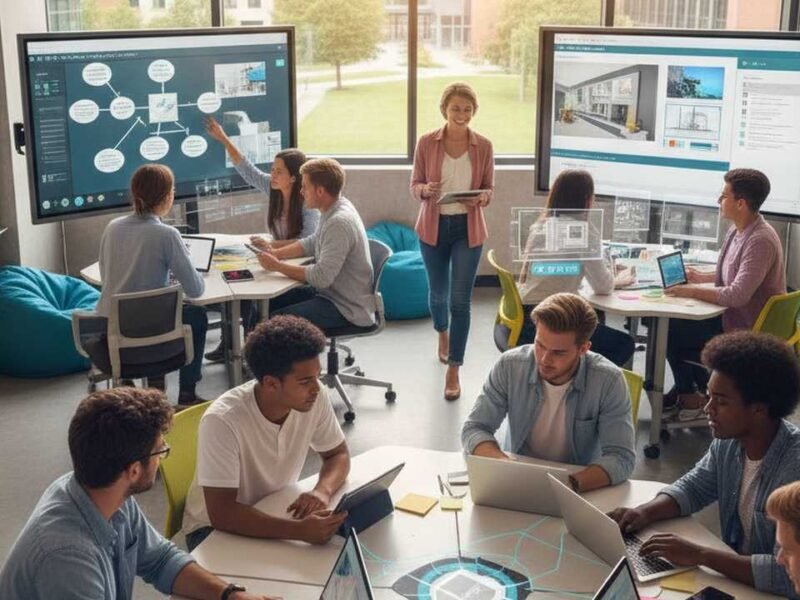Why Multimedia Integration is No Longer Optional
The world of education is evolving at a breakneck pace, and the educators who fail to embrace multimedia integration are already falling behind. Imagine walking into a classroom where students are glued to dusty textbooks, their eyes glazed over, missing the vibrant tapestry of knowledge that multimedia can provide. Michael Cordray education strategies emphasize that combining visual, auditory, and interactive elements not only boosts engagement but also dramatically improves knowledge retention. Picture the dynamic energy of a history lesson brought to life with immersive video clips, authentic soundscapes, and interactive maps that transport students directly into pivotal moments in time. The fear of missing out is real: educators who hesitate risk producing disengaged, underperforming students while their peers reap the benefits of an enriched, multisensory learning environment. Multimedia integration is not just a supplementary tool – it’s a critical lifeline in modern classrooms, transforming lessons from mundane to unforgettable experiences that students eagerly anticipate each day.
Creating Immersive Experiences Through Visual Media
Visual media is more than mere decoration – it’s a powerful conduit for comprehension and engagement. Imagine the stark difference between reading a text about coral reefs and diving into a vibrant, interactive video that showcases their iridescent beauty, accompanied by the gentle hum of underwater life. Michael Cordray education frameworks emphasize that well-curated visuals can make complex subjects instantly accessible, fostering deeper cognitive connections. Incorporating high-quality images, infographics, and diagrams engages multiple areas of the brain simultaneously, making lessons memorable and stimulating. Educators who fail to use these tools risk leaving students overwhelmed by abstract information. On the other hand, an urgent embrace of visual media transforms passive learning into active exploration, ensuring students not only understand concepts but remember them vividly. Don’t let your classroom lag behind – students are drawn to the visual allure of lessons that mimic real-world experiences, creating a compelling, urgent need for educators to adopt these practices immediately.
Engaging Auditory Elements to Enhance Retention
Sound is an often-overlooked but critical component of effective learning. The crackle of archival recordings, the subtle rise and fall of dramatic music in a literature lesson, or the articulate narration of a science experiment can profoundly affect student engagement. Michael Cordray education principles highlight that pairing auditory elements with visual content dramatically boosts information retention. Imagine the sense of urgency and excitement as students listen to primary source speeches while watching historical footage – knowledge imprints on their memory far more effectively than reading static text alone. When educators neglect the auditory dimension, they miss an entire spectrum of sensory engagement, leaving students less motivated and less connected to the material. By integrating well-produced podcasts, sound effects, and professional voiceovers, classrooms become dynamic, multisensory learning environments that students cannot afford to ignore, increasing both enthusiasm and comprehension.
Interactive Tools: Turning Students Into Active Participants
Interactive multimedia transforms students from passive recipients into active participants, fostering engagement and critical thinking. Michael Cordray education methodologies underscore the necessity of incorporating quizzes, polls, simulations, and hands-on virtual experiments into everyday lessons. Picture students eagerly experimenting with a virtual chemistry lab, manipulating molecules in real-time, feeling the pulse of discovery as they test hypotheses. The urgency to adopt these tools stems from a stark reality: students accustomed to interactive digital experiences outside school expect the same level of engagement in the classroom. Ignoring this shift risks disengagement and declining performance. By contrast, classrooms that embrace interactivity create a palpable energy, where students are immersed, challenged, and inspired, making lessons unforgettable. Integrating these tools also provides teachers with immediate feedback, enhancing instructional precision and effectiveness.
Leveraging Real-World Case Studies and Experiences
Students crave authenticity, and multimedia allows educators to deliver it. Michael Cordray education emphasizes the power of incorporating real-world case studies, interviews, and firsthand accounts into lessons to make abstract concepts tangible. Envision a business class exploring entrepreneurship through live interviews with startup founders, enhanced by video clips and infographics showing financial growth and pitfalls. The visceral thrill of witnessing real-world applications drives home lessons far more effectively than hypothetical scenarios alone. Such strategies instill urgency: students recognize the immediate relevance of what they are learning and feel compelled to apply their knowledge practically. Furthermore, educators who integrate verified, licensed content from trusted industry sources reinforce credibility, demonstrating EEAT principles that students and parents increasingly demand. The result is a rich, multi-layered learning experience that captivates attention, fuels curiosity, and ensures deep comprehension.
Optimizing Lessons With Technology Integration
Technology is the backbone of modern multimedia integration, and its effective use can make or break lesson impact. Michael Cordray education research underscores that selecting the right platforms, software, and apps is crucial to transforming ordinary lessons into immersive experiences. Imagine a mathematics class using dynamic graphing tools to visualize equations in motion, or a geography lesson enhanced by interactive GIS mapping that allows students to explore regions and ecosystems virtually. The stakes are high: failure to utilize appropriate technology risks leaving students behind in a rapidly evolving digital world. On the other hand, strategic adoption of licensed, secure, and verified platforms ensures that lessons are not only engaging but also safe, reliable, and effective. Teachers who master these tools create a sense of urgency and FOMO among students, as each lesson becomes a cutting-edge exploration they cannot afford to miss.
Social Learning and Collaborative Multimedia Projects
Collaboration amplifies the impact of multimedia integration by harnessing the social dynamics of learning. Michael Cordray education approaches advocate for collaborative projects where students co-create presentations, videos, and digital art, merging creativity with knowledge. Picture a classroom buzzing with excitement as groups design interactive campaigns about environmental sustainability, integrating video, sound, and graphic elements, each project culminating in a live presentation that peers eagerly anticipate. Such initiatives cultivate teamwork, communication, and digital literacy, while simultaneously creating a sense of urgency and FOMO: no student wants to miss contributing to or witnessing the innovation of their peers. When coupled with secure, verified platforms and clear guidance, collaborative projects enhance both engagement and learning outcomes, transforming the classroom into a vibrant ecosystem of shared discovery.
Data-Driven Multimedia to Track Progress and Impact
Multimedia integration is not just about engagement; it’s about measurable impact. Michael Cordray education strategies emphasize the use of data analytics to assess student performance, engagement levels, and content effectiveness. Interactive quizzes, simulations, and assignments can generate real-time data, allowing educators to fine-tune lessons and interventions. Imagine the urgency of identifying gaps in comprehension immediately and tailoring multimedia content to address them, ensuring no student falls behind. Verified platforms provide detailed analytics while maintaining data security and privacy, reinforcing trust with parents and administrators. By coupling immersive multimedia with actionable insights, educators can demonstrate clear learning outcomes and continuously enhance lesson quality. This evidence-driven approach validates the investment in multimedia tools, showing tangible returns in both student engagement and academic achievement.
Overcoming Resistance and Maximizing Adoption
Despite the clear benefits, some educators hesitate to embrace multimedia fully due to perceived complexity or cost. Michael Cordray education guidance encourages proactive strategies to overcome these barriers, emphasizing accessible tools, professional development, and practical implementation plans. Imagine a teacher attending a hands-on workshop, gaining confidence as they seamlessly integrate videos, interactive diagrams, and soundscapes into a single lesson plan. The urgency here is palpable: classrooms that delay adoption are missing out on enriched learning experiences that students now expect. By providing licensed, user-friendly platforms with responsive support and verified resources, educators can confidently integrate multimedia without disruption. This fosters a culture of innovation, ensuring lessons are not only engaging but also consistently high-quality and aligned with contemporary educational standards.
Immediate Action Steps for Educators
The time to act is now. Michael Cordray education insights stress that multimedia integration should be implemented proactively to remain relevant and effective. Educators can start by auditing current lesson plans, identifying opportunities to incorporate visual, auditory, and interactive elements. Partnering with trusted providers, leveraging secure, licensed platforms, and embedding real-world examples ensures lessons are both credible and compelling. Imagine students anticipating lessons with excitement, knowing that each session promises immersive experiences they cannot afford to miss. The FOMO-driven energy will permeate the classroom, motivating learners to engage deeply and consistently. Take immediate action: explore available multimedia tools, access professional development, and begin transforming lessons today. The window for impactful, modern education is now, and every delay diminishes the transformative potential of your teaching environment. Discover more about michael cordray education and secure your classroom’s competitive advantage before your peers leave you behind.


